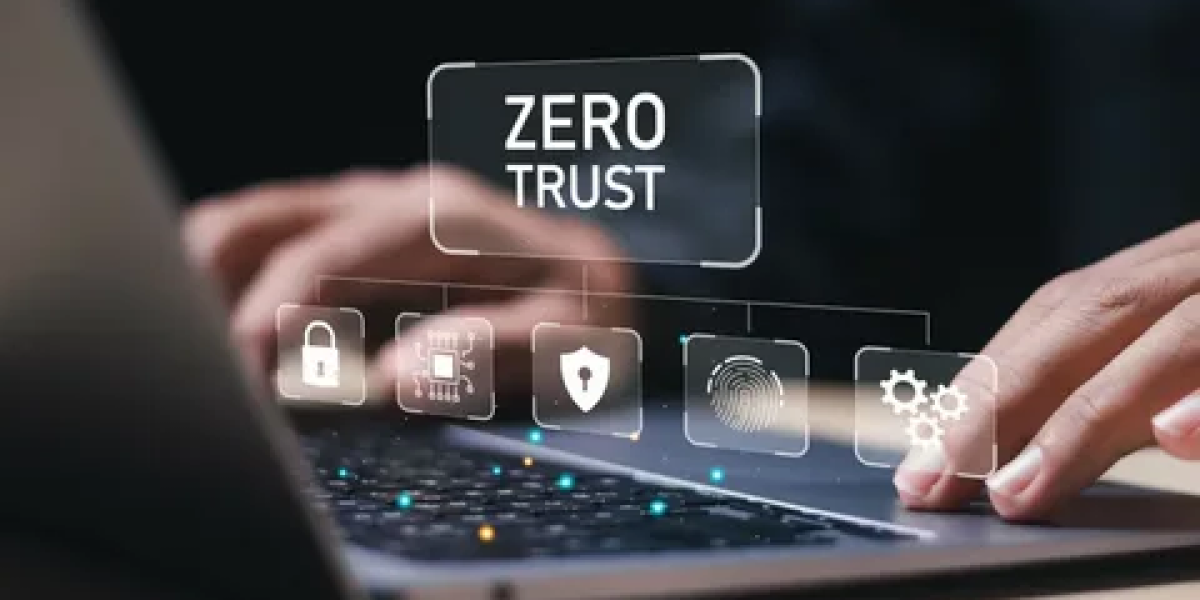Understanding the Hybrid Work Environment
The way people work has changed a lot in recent years. Many companies now use a hybrid model. This means employees sometimes work in the office and sometimes from home or other places. While this brings flexibility and comfort, it also brings new problems for data security.
In a hybrid work setup, company data is no longer locked inside an office network. Employees use many devices and connect from different places. This makes it harder to keep everything safe. A strong plan is needed to protect company data, devices, and users. That is where a zero trust security solution becomes helpful.
What Is a Zero Trust Security Solution?
A
zero trust security solution is a method that assumes no user or device can be trusted by default. Even if someone is inside the company network, they still need to prove who they are. Every access request is checked, and permission is only given if the request is valid.
Zero trust is based on three basic ideas:
- Never trust automatically: Every user and device must be verified.
- Always verify identity: Users must prove who they are every time they ask to access something.
- Limit access: Give users access only to the data and tools they need.
These rules help companies stay safe in a hybrid world, where people work from many places.
Why Traditional Security Is Not Enough Anymore
In the past, security was like a wall around the office. Once someone was inside, they could move around freely. But now, people use personal laptops, mobile phones, and cloud apps. This makes it easy for attackers to enter and hard for companies to spot threats quickly.
Here are some common problems:
- Devices without updates or strong passwords
- Home Wi-Fi networks that are not secure
- Sharing files through unsafe apps
- Employees using personal accounts for work
These problems make it important to use a zero trust security solution that checks each connection and keeps the company protected.
How Zero Trust Security Solutions Help in Hybrid Workplaces
Verifies Every User
A zero trust security solution makes sure only the right people get in. It checks user identity with passwords, security codes, or fingerprint scans. Even if someone steals a password, they still cannot get in without the second step.
Checks Every Device
Not all devices are safe. A personal laptop may have viruses or old software. Zero trust systems check if a device is healthy before allowing access. If a device is risky, it may be blocked or given limited access.
Limits What People Can See
Employees do not need access to all company data. For example, a marketing team member does not need finance data. A zero trust security solution only allows access to what is needed. This keeps sensitive data safer.
Protects Cloud and On-Site Resources
In a hybrid setup, companies often use both cloud services and in-office servers. Zero trust security works across both. It does not matter if someone is connecting from home or office. The same rules apply everywhere.
Keeps Watching for Trouble
Even after access is given, the system keeps an eye on user behavior. If something strange happens—like logging in from a new country or downloading too much data—alerts can be sent, or access can be cut off.
Key Benefits of Using Zero Trust in a Hybrid Workplace
Helps Prevent Data Breaches
By checking every request, the system lowers the risk of hackers getting inside. Even if someone breaks in, they cannot go far without extra approval.
Encourages Safe Work Habits
Employees learn to follow safe steps. They understand that access is not automatic and that their devices need to meet certain rules.
Supports Work from Anywhere
With a zero trust security solution, it becomes easier and safer for people to work from any place. They can log in securely without risking company data.
Simplifies IT Management
IT teams get better tools to control and monitor access. This makes their job easier and allows quicker action when there is a problem.
Challenges That Can Be Managed with Good Planning
It is true that setting up a zero trust system takes time and effort. Companies need to:
- List all users, devices, and applications
- Create clear access rules
- Train staff on new steps
But with good planning, these steps are not hard. And the safety they bring is worth the effort.
Real-World Example of Zero Trust in Action
Imagine a company with 500 employees. Half of them work from home. A team member tries to log in from a new device. The zero trust system notices that the device does not have security updates. Access is denied, and the IT team is notified. The employee updates the software, and then access is given.
This shows how a zero trust security solution protects the company while still allowing smooth work for the employee.
Conclusion
The future of work is flexible. People want to work from homes, coffee shops, and shared spaces. But this flexibility needs strong safety measures. A
zero trust security solution is one of the best ways to keep company data, people, and tools safe in this new world.
By checking every user, device, and request, this system helps reduce risks and improve control. It works well with modern tools and supports work from anywhere. It may take some time to set up, but the long-term benefits are clear and helpful.
If your team works in different places or uses many devices, now is a good time to improve your security. A zero trust security solution can help protect your data and support your business without slowing people down. Start with a plan, set clear rules, and help your team understand the value of strong security.












